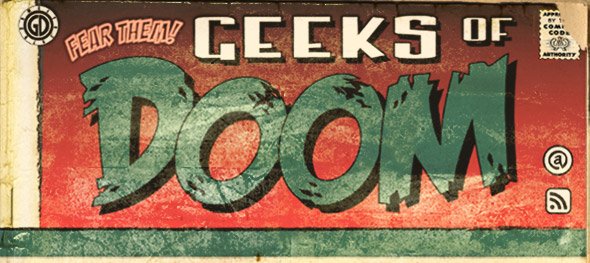
Doctor Who
Season 9, Episode 7 “The Zygon Invasion”
Directed by Daniel Nettheim
Written by Peter Harness
Starring Peter Capaldi, Jenna Coleman, Jemma Redgrave, Ingrid Oliver
BBC America
Air date: Saturday, October 31, 2015
Doctor Who is not a series that generally tackles contemporary issues head-on. It was primarily started as a children’s entertainment designed to educate and inform, where possible, but not directly enter into controversy. So the Daleks can attempt genocide, we can all boo and hiss, and the Doctor can stop them, commenting about why they are so very wrong along the way. Looking back over the last 50-plus years, there are only a handful of serials that take stands on pressing political or social topics of the day. The Jon Pertwee serial “The Green Death” is remembered for its mention of environmental issues, as one example. The Tom Baker serial “The Sun Makers” dealt with the high British tax rates that made musical artists like the Rolling Stones, David Bowie, and Led Zeppelin into tax exiles, as another.
In this context, “The Zygon Invasion” that we see this week is a very rare bird indeed. It is a UNIT story, perhaps the first real UNIT story in a very long time. It is also one with a very contemporary edge. With the Zygons now settled on Earth through a treaty created in “The Day Of The Doctor,” this episode takes on what happens next… which turns out to tie in very neatly with issues of terrorism and surveillance in a post-9/11 world, the ethnic and social identity of refugees, and social reactions to the Syrian refugee crisis. How does the episode perform? Let’s find out.
First, why is this episode unique as a modern UNIT story? There have been dozens of them, right? This is Jemma Redgrave‘s third appearance as Kate Lethbridge-Stewart since Steven Moffat became the showrunner of Doctor Who. How is this episode different?
To answer that, you need to understand why UNIT exists and why it was integral to the show’s premise for several years. Back in the late 1960s, Doctor Who was a black and white television program that ran 40+ weeks a year with declining ratings. Budgets were getting tight. Color TV came to BBC 2 starting in 1967, and BBC 1 began to make the leap in 1969. With color, competition for science fiction programs was about to arrive from the United States, primarily in the form of Star Trek: TOS. That Doctor Who could compete well in such an environment was not a sure thing.
Ultimately, the decision was made to give Doctor Who a final chance but only with a change in format. Instead of the alien worlds or points in Earth history that the show primarily visited through its first six seasons, it would instead focus mostly on contemporary Earth, or the Earth of a few years in the future. Shooting a show in the present day (or nearly so) would be much cheaper. It also allow for a bigger set of recurring characters. It would allow the show to get away from the “monster of the week” and “base under siege” plots that were the show’s bread and butter during the Troughton years. Finally, it would move from black and white to color and drop from over 40 episodes a year to about 25.
UNIT was integral to the new format. The Doctor was exiled to Earth, and unable to travel in the TARDIS for the foreseeable future. In order to operate in this new environment, the Doctor would need agency — someone to vouch for his identity and give him room to operate. Enter the United Nations Intelligence Taskforce (later the Unified Intelligence Taskforce), headed by Brigadier Alastair Gordon Lethbridge-Stewart, a role played by Nicholas Courtney. First appearing as Colonel Lethbridge-Stewart in “The Web Of Fear”, he gets promoted to General and British head of UNIT by the time of “The Invasion” when the Cybermen try to conquer Earth in 1975 as a dry run for the new format. He then goes on to appear regularly on the show for the five seasons of the Pertwee era, guest at least once a season for Tom Baker’s first two seasons, and then appear twice on the show in the 1980s. With Courtney’s very Nick Fury-esque turn as Bret Vyon in “The Dalek’s Master Plan” in 1965, he was the only actor appear opposite all the Doctors except Colin Baker during the run of Classic Doctor Who.
Thanks to savvy production by Barry Letts and Terence Dicks, the new color-era format of Doctor Who was a hit and could be made on acceptable budget. This allowed Letts and Dicks to gradually revert the show to something more like its original format, at least some of the time, across five seasons. That process continued until Robert Holmes and Philip Hinchcliffe took over with Doctor Tom Baker in 1974. Holmes, Hinchcliffe, and Baker made the show an even bigger hit, and the UNIT premise was abandoned entirely by the end of the series 13th Season in 1976.
From there, UNIT pretty much enters limbo for decades. It gets mentioned from time to time. The Doctor uses his UNIT connections to get things done in the Peter Davison serial “Time Flight.” The Brigadier is retired, and not happily, a year later in the serial “Mawdryn Undead” (though the role was originally supposed to go to William Russell’s Ian Chesterton.) He also joins the huge cast of “The Five Doctors.” UNIT and the Brigadier get a more proper revival for the serial “Battlefield” in 1989, but it’s a one off.
The revival of Doctor Who in 2005 does little for UNIT. Russell T. Davies isn’t opposed to UNIT per se, but he has other ideas. Rather than an official government response to alien visitation, he’s more interested in a shadowy organization called Torchwood that becomes the first Doctor Who spinoff series. Still, he gives UNIT its first real mention in the new series in “The Sontaran Stratagem” and he does allow Martha Jones to join UNIT as its medical officer after she leaves the Doctor. The Brigadier also appears on Davies’ second Doctor Who spinoff The Sarah Jane Adventures.
It is Steven Moffat’s affection for the Pertwee years that brings UNIT to a much greater revival. It gets a new leader in the form of Kate Lethbridge-Stewart, who appears on the series three times prior to “The Zygon Invasion.” UNIT picks up an additional character named Osgood (played by Ingrid Oliver) during the last of those appearances, “The Day Of The Doctor.” We thought she died in “Death In Heaven” but did she really? This week, we find out.
So how is “The Zygon Invasion” different from any of these other Moffat-era appearances? It comes down to a question of purpose. In the years between 1976 and 2015, UNIT was more often than not a stand-in. You need to give the Doctor the ability to act in a semi-official capacity in the name of one or more Earth governments? Call UNIT or someone affiliated with UNIT or show old UNIT identification. Peter Capaldi most recently did this in “Under The Lake.” Even in its first appearance under Steven Moffat, it was a fairly generic organization that might be named anything. It was only the connection of the Stewart family name that connected it more strongly to history. That changed a little bit with “The Day Of The Doctor” because UNIT did something fairly unique by negotiating an agreement with an alien species, but it returned to a fairly generic crisis response organization (albeit with some very broad powers) in “Death In Heaven.”
No, the UNIT of “The Zygon Invasion” is an altogether different creature. It has specific responsibilities for enforcing the Zygon settlement treaty. It has military and civilian leaders, that sometimes disagree on policy. Even more than in the Pertwee/Baker years, it has impact on Earth; the radicalization of a Zygon splinter group seems to have as much to do with how UNIT handled the human end of the treaty as Zygon internal politics. It is the proxy for a number of overworked and understaffed governmental bureaus that simultaneously operate in the light but have less frequently seen tendrils in the dark.
The episode is generally terrific from the opening salvo featuring Osgood to the final twist with Clara at the end. It creates some useful analogues between human/Zygon interaction and the British policy of legally dealing with ethnic councils of minorities assimilated from elsewhere in the world as the Empire became the Commonwealth. The Zygons generate some real menace, and their shape shifting abilities create real suspense. This is primarily due to the fact that the Zygons seem to more about UNIT than UNIT does about itself. This was part of the American fear about Al Qaeda in 9/11 aftermath; how much did we share with our attackers out of naivete and innocence that let them do us harm?
Only a few points did not ring true. Seeing Jemma Redgrave with a handgun did not look natural. Maybe it’s that Doctor Who traditionally eschews such Hollywood ideas. It could be that she wasn’t used to handling a gun herself. That just looked forced to me.
The final cliffhanger sequence also seemed slightly cliched. I won’t reveal the exact details. As a set piece, it seems particularly relevant given that Scottish officials recently announced that they wish to speak to two Libyan nationals in the 1988 Lockerbie Bombing case and some of the conspiracy theories there. It is, however, something that’s been done one or two times too many.
Those are relatively minor quibbles. This episode works for the most part. It works by being current and relevant. It works by giving the Zygons their first really scary presentation since the 1970s It works by bringing UNIT all the way back in a rather real way. That is all together fitting in a historical sense since the Zygons first appearance in 1976 was the last strong appearance by UNIT. I won’t call it one of the season’s absolute best, but it’s close.
Trailer






No Comments »
No comments yet.
RSS feed for comments on this post. TrackBack URL
Leave a comment